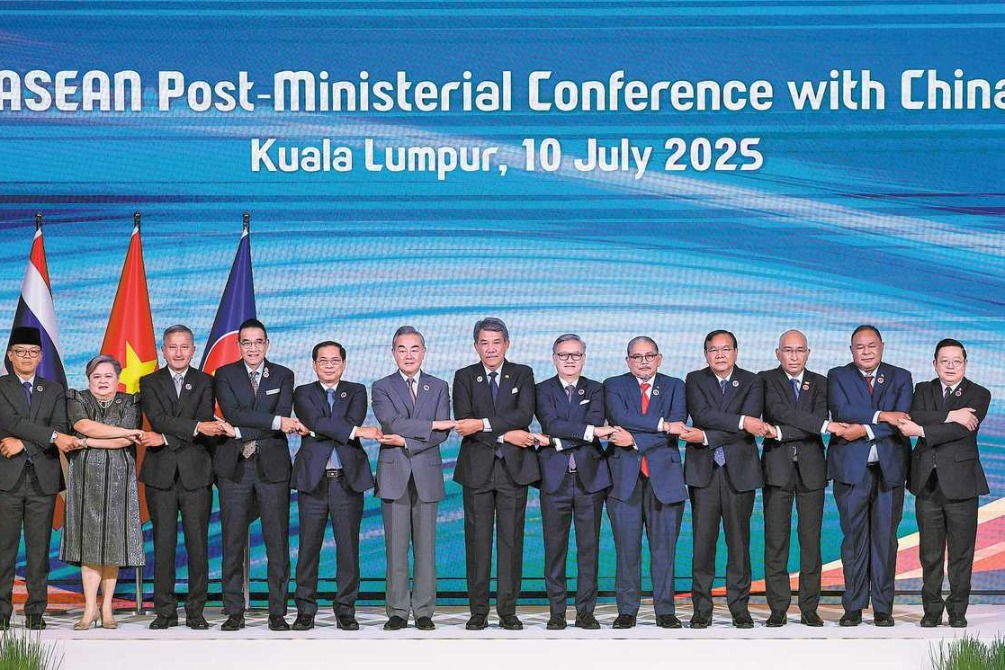Now, China Launches Five Year Long Term Visa Program to Boost Business Travel and Economic Ties with ASEAN Nations - Travel And Tour World
Tuesday, July 8, 2025

To reaffirm its economic connections with Southeast Asia, China recently introduced a new long-term visa initiative aimed at leaders and experts of member nations of ASEAN. Issuing several-entry visas that may extend for a period of five years or longer, the initiative is focused on easing travel, expanding partnerships in business, and unleashing possible growth in both regions. By eliminating restrictions on cross-border travel, China stands as a major player in ASEAN’s economic integration while spurring growth in business travel and aircraft manufacture.
This visa issuance comes at a good time for the Asia-Pacific, which is seeing a spike in demand to travel internationally. It will likely boost airlines, regional infrastructure, and economic cooperation and become a key part of a more integrated and prosperous Southeast Asia.
China’s new long-term visa plan is a significant shift in China’s interaction with ASEAN countries. It grants multiple entry visas that can last as long as five years, and the plan eliminates most of the restrictions on travel that previously obstructed the exchange of business persons, entrepreneurs, and professionals. China’s new visa policy allows eligible visitors to go to China as frequently as required and no longer experience time-consuming applications for a visa on a trip-by-trip basis.
This policy is a game-changer for corporate leaders from ASEAN countries. These countries, including Indonesia, Malaysia, Thailand, Philippines, Vietnam, Singapore, Brunei, Laos, Myanmar, Cambodia, and Timor-Leste, which have been reliant on Chinese trade, would now have increased access to Chinese markets, factories, and potential partners. It would become simpler to coordinate supply lines, to form new joint ventures, and to develop new business potential in a host of industries like manufacturing, technology, and services.
This program is particularly useful for small and medium-sized businesses (SMEs) within the territory, which have previously found it difficult when trying to connect with major markets such as China. Under the new visa program, SMEs will have better access to Chinese opportunities, encouraging greater economic cooperation and increased trade connections.
The most immediate effect of the new visa policy will be on the airline industry. Seamless travel procedures between ASEAN nations and China have their regional airlines poised to rethink their strategies and serve increased corporate travel requirements better. Low-cost carriers (LCCs), which already serve a significant proportion of small and mid-sized enterprises across the region, see this policy as a good opportunity to diversify their route options and increase route frequencies.
The new visa scheme will have a special benefit for small firms, as these rely on LCCs for affordable and cost-effective flying. Airlines will construct their networks larger and add more destinations on their lists, including to Chinese second- and third- tier cities. This will help firms access Chinese growth markets more conveniently and thus drive economic growth across both regions.
Furthermore, airlines are optimizing their timings to better suit corporate travelers. Convenience is a key criterion among corporate travelers, and they like early morning departures and evening arrivals that allow them to wrap up their appointments and return home in a day. Airlines have, therefore, optimized their flight timings for greater productivity and made traveling for work easier and predictable for Southeast Asia’s working class.
The global airline industry was severely hit by the COVID-19 pandemic, and Southeast Asia airlines struggled to recover. Even so, the issuance of the long-stay visa scheme will enhance recovery of airlines in the region by meeting rising demands for corporate travel. Airlines are increasingly focusing on corporate travelers as worldwide travel keeps rising, and this will enhance industry growth.
Statistics from Association of Asia Pacific Airlines reveal that regional airlines carried over 158 million international passengers in the first five months of 2025, a 12% rise compared with last year’s corresponding period. This rising traffic and surging demand for airfreight also mark a recovery of the industry.
However, airlines are not exempt because increased and decreased fuel prices, changing travel trends, and politics remain a source of concern. China’s new visa policy is a welcome relief for airlines because this is likely to boost Chinese-ASEAN business trip flow between these nations. This will result in high occupancy rates and improved profit margins for airlines.
Additionally, airlines can personalize their services based on individual business travelers’ needs through this new visa program, such as offering greater flexibility in their booking options, increased connectivity, and better in-flight amenities. Airlines can then better accommodate this new demand and cater to passengers’ needs.
The long-term visa plan falls within a larger Chinese effort to enhance economic connections with ASEAN nations and advance regional integration. In streamlining journeys for CEOs, the plan wants to encourage increased cooperation between Chinese and ASEAN firms. It would create new avenues for investment, transfer of technology, and partnerships as well as further integrate Southeast Asia within China’s economic map.
Particularly, firms belonging to members of ASEAN nations will have better access to China’s massive market, production base, and knowledge of technology. China, as the world’s second-largest economy, drives a large percentage of international trade, and this visa plan will help ASEAN firms take part in big partnerships, exhibitions, and conferences and explore new markets easily. This initiative is conducive to China’s Belt and Road Initiative for promoting regional infrastructure and trade linkages and thus benefits both regions.
Moreover, the new visa policy reaffirms China as a key partner in Southeast Asia’s economic recovery. In easing border restrictions on travel by businessmen, China facilitates cross-border investment and trade. In seeking cooperation between ASEAN and China on innovation, jobs, and sustainable growth, the new visa policy will enhance economic resilience and underpin regional prosperity in the longer term.
The China-ASEAN long-term visa plan for businessmen is more than just a travel facilitation; it is a strategic wager on a shared economic development of the future. Streamlining procedures and relaxing mobility, the policy will promote enhanced business linkages, increased investment flow, and improved connectivity on a regional basis. This initiative is a commitment by China to accompany ASEAN economic growth while promoting connectivity between the two regions.
Long term, the visa plan will enable deep economic linkages and cooperation between China and ASEAN countries to their mutual advantage. In a continued state of expanding collaboration between both sides’ companies, innovation, trade, and cross-border partnerships will increasingly thrive. Moreover, ASEAN firms will find better access to China’s vast consumer market, sophisticated production facilities, and modern infrastructure. The long-term visa policy not only benefits airlines and the entire aviation sector, but also economic development in general. It will help firms overcome logistic challenges more effectively and form more effective cross-border partnerships, and hence achieve sustainable development and further integrate Southeast Asia into the global economy.
China’s announcement of the long-term visa plan for ASEAN countries represents a trailblazer initiative which further deepens economic and business linkages between the two regions. By simplifying travel for businessmen and leaders, China is becoming a key regional hub for trade, investment, and cooperation. Airlines reap benefits from increased demand for corporate travels, and ASEAN countries will have wider access to Chinese market and development prospects. Ultimately, this policy represents a major trigger of regional economic integration and cooperation and bodes well for China and Southeast Asia’s bright future.
You may also like...
Diddy's Legal Troubles & Racketeering Trial

Music mogul Sean 'Diddy' Combs was acquitted of sex trafficking and racketeering charges but convicted on transportation...
Thomas Partey Faces Rape & Sexual Assault Charges

Former Arsenal midfielder Thomas Partey has been formally charged with multiple counts of rape and sexual assault by UK ...
Nigeria Universities Changes Admission Policies

JAMB has clarified its admission policies, rectifying a student's status, reiterating the necessity of its Central Admis...
Ghana's Economic Reforms & Gold Sector Initiatives

Ghana is undertaking a comprehensive economic overhaul with President John Dramani Mahama's 24-Hour Economy and Accelera...
WAFCON 2024 African Women's Football Tournament

The 2024 Women's Africa Cup of Nations opened with thrilling matches, seeing Nigeria's Super Falcons secure a dominant 3...
Emergence & Dynamics of Nigeria's ADC Coalition

A new opposition coalition, led by the African Democratic Congress (ADC), is emerging to challenge President Bola Ahmed ...
Demise of Olubadan of Ibadanland
Oba Owolabi Olakulehin, the 43rd Olubadan of Ibadanland, has died at 90, concluding a life of distinguished service in t...
Death of Nigerian Goalkeeping Legend Peter Rufai

Nigerian football mourns the death of legendary Super Eagles goalkeeper Peter Rufai, who passed away at 61. Known as 'Do...





